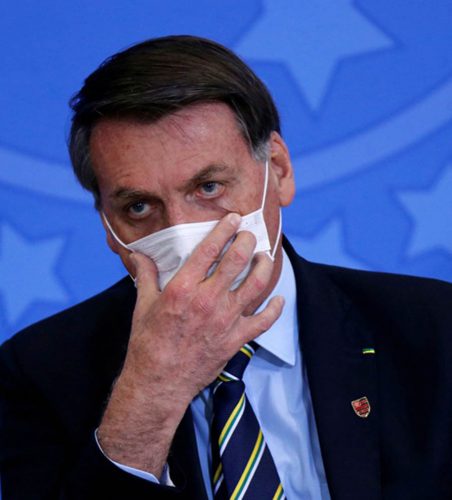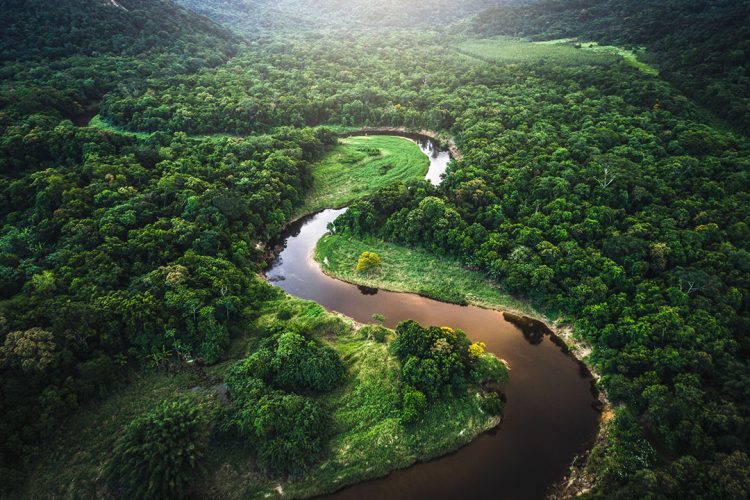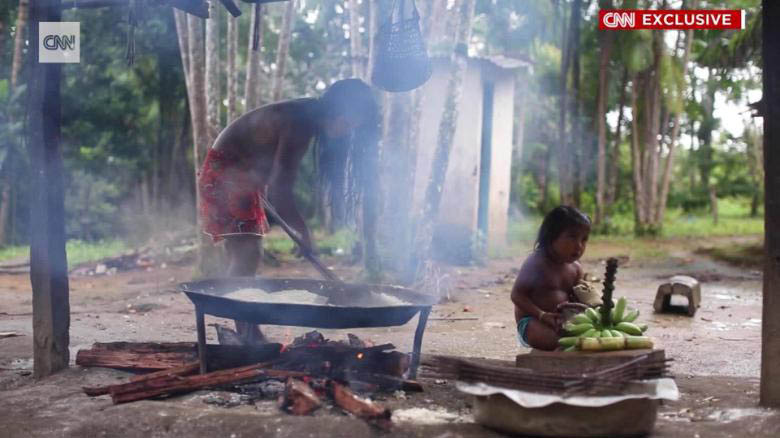By Jenny Gonzales
Even as coastal communities in the hemisphere seek to sustain their pushback efforts against COVID-19, reports emanating from non-governmental organizations including the Socio-environmental Institute (ISA) and Greenpeace Brazil point to an aggressive ‘invasion’ of indigenous reserves and conservation units in the Amazon rainforest by well-financed miners, unmindful of either the impact of their gold recovery pursuits on the continued destruction of the rainforest or, more recently, that threat of the spread of the coronavirus among the indigenous Indians inhabiting the world’s largest expanse of rainforest.

The most recent reports on environmental websites and one in the Washington Post say that the invasion by the miners and the threat of a worsening of the already high level of covid-19 infection among Indian communities in the Amazon is being made worse by what one report describes as the “inflammatory anti-indigenous rhetoric of the Jair Bolsonaro administration” in Brazil which it says ‘has sent a clear signal so far, that it has no major plans of stopping the invasions or penalizing the perpetrators.”
Statistics available up to mid-year indicate that mining-related deforestation within conserved areas accounted for 67.9% of total tree loss in Legal Amazonia. From January to June, illegal mining destroyed 2,230 hectares (5,510 acres) of forest inside conservation units (UCs) and 1,016 hectares (2,510 acres) inside indigenous territories (TIs).
This latest wave of gold rush in the Amazon, coinciding as it does with the onslaught of the COVID-19 pandemic threatens to wreak havoc with the lives of the indigenous Indians. Reports on the still evolving situation indicate that COVID-19 has so far infected 14,000 indigenous people and resulted in close to 300 deaths on indigenous lands. (the numbers may be considerably higher given that these figures are more than a month old).
Against this backdrop the Brazilian government is reportedly pushing for the enactment of laws that would legitimize what, reportedly, up until now is the illegal mining of gold on indigenous lands in the rainforest.
Already wreaking havoc on the environment through the illegal clearing of forests and the pollution of rivers, the miners, one report by the Brazilian NGO Socio-environmental Institute (ISA) says, now act as “potential vectors for the coronavirus. Thousands of miners in search of gold within Brazil’s Amazon Indigenous Territories (TIs) and Conservation Units (UCs), are illegally clearing forests and polluting rivers at an alarming rate in the midst of the COVID-19 pandemic — more than 88,000 Brazilians are dead of the pandemic, with more than 430,000 cases reported in the Amazon as of 28 July.
As the miners wreak havoc on the environment and terrestrial and aquatic biodiversity, they also act as potential vectors for the coronavirus, which has already infected at least 14,647 indigenous people and caused 269 deaths on indigenous lands, according to a report by the Socio-environmental Institute (ISA), a Brazilian NGO. Some indigenous people have even been pressured, or coerced via death threats, to provide labour to carry out this illegal activity, ISA says.
The Amazon gold rush has triggered a marked increase in deforestation due to illegal mining in protected areas. In the first six months of this year, according to alerts from the National Space Research Institute, INPE’s Deter satellite monitoring system, deforestation by mining within conserved areas represented 67.9% of total tree loss in Legal Amazonia, a socio-geographic designation including all or parts of nine states in the Brazilian Amazon.
According to Article 231 of Brazil’s 1988 Constitution, mining within indigenous lands is illegal. In conservation units, it can be practiced only in some categories of sustainable use, with the proper authorizations, according to law 9.985/2000. Bolsonaro has heavily pressured Congress to overthrow these restrictions, which it can legally do, but the legislature has so far resisted his aggressive entreaties.

Greenpeace recently registered images of newly devastated areas; from the air, investigators spotted tractors and backhoes ripping down trees and removing large amounts of soil; the use of such heavy equipment is a strong indicator that the miners are not acting alone, but by elite land grabbers who have significant money to pump into the illegal endeavours.
From January to June of this year, illegal mining destroyed 2,230 hectares (5,510 acres) of forest inside conservation units (UCs) according to INPE.
Deforestation reached 1,016 hectares (2,510 acres) within indigenous lands over that same period. In June alone, 406 hectares (1,003 acres) were deforested inside indigenous territories.
In May, Greenpeace filed a public civil action with the Federal Public Ministry of Pará (MPF-PA) asking the Federal Union, IBAMA, ICMBio (the Chico Mendes Institute for Biodiversity Conservation, the nation’s national park agency), and FUNAI (Brazil’s indigenous affairs agency) to fight against illegal mining in protected areas.
MPF-PA issued a lawsuit demanding that “the bodies in charge be obliged to again combat illegal mining” but lawsuits have had little effect, say analysts, because illegal mining is not only tolerated by government agencies, but is also condoned, and even encouraged, by officials in commanding positions.
The government strategy has attracted some indigenous people to participate in illegal mining. “The intrusion of white miners into the interior of indigenous territories often has the support of some indigenous people who receive commissions.
Greenpeace says that mining has been causing indelible damage in the Amazon. A 2018 technical report by the Federal Police attested to the fact that the Tapajós River along with several conservation units was at the time receiving dumped mining waste totalling at least seven million tons per year.
Last February, Bolsonaro pushed forward legislation authorizing mining on indigenous lands. The 191/2020 bill awaits analysis via the creation of a special Commission within the House of Deputies. The head of the lower house has so far blocked the bill.






